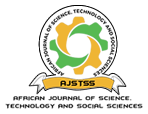The Wildlife-Human Conflicts and Community Perceived Benefits with Proximity to Meru National Park, Kenya
DOI:
https://doi.org/10.58506/ajstss.v2i2.144Keywords:
Animal-human Confliect, Wildlife-human interface, Meru National ParkAbstract
Abstract
Background: Communities and wildlife living in close proximity bear the brunt of direct impacts from human-wildlife conflicts (HWC). HWC can lead to hostility to animal species and loss of livelihoods and spread of infectious diseases. However, few studies have examined HWC and perceived community benefits with proximity to wildlife conservancies. We examined HWC and perceived community benefits of residents bordering Meru National Park, Kenya.
Methods: Data were collected via a structured questionnaire and focused group discussion guide in a cross-sectional study. Ethical clearance was obtained from Meru University of Science and Technology Ethical Review Committee (MIRERC). Authority to carry out interviews was sought from the County Government of Meru. Data were coded and analysed through STATA and summarized using descriptive statistics.
Results: Overall, 96.7 % of the study population were aware of human-wildlife conflict or had experienced it. Elephant, monkey, hyena, lion and the leopard were the frequently reported conflict animals to cause crop damage, loss of livelihood, bodily injuries and destruction of property.
Conclusions
Only 26.6% of respondents were aware of benefits associated with proximity to the park. A multifaceted approach through KWS, community and government urgencies is essential in the management of HWC, to improve corporate responsibilities and minimization of spread of zoonoses.


